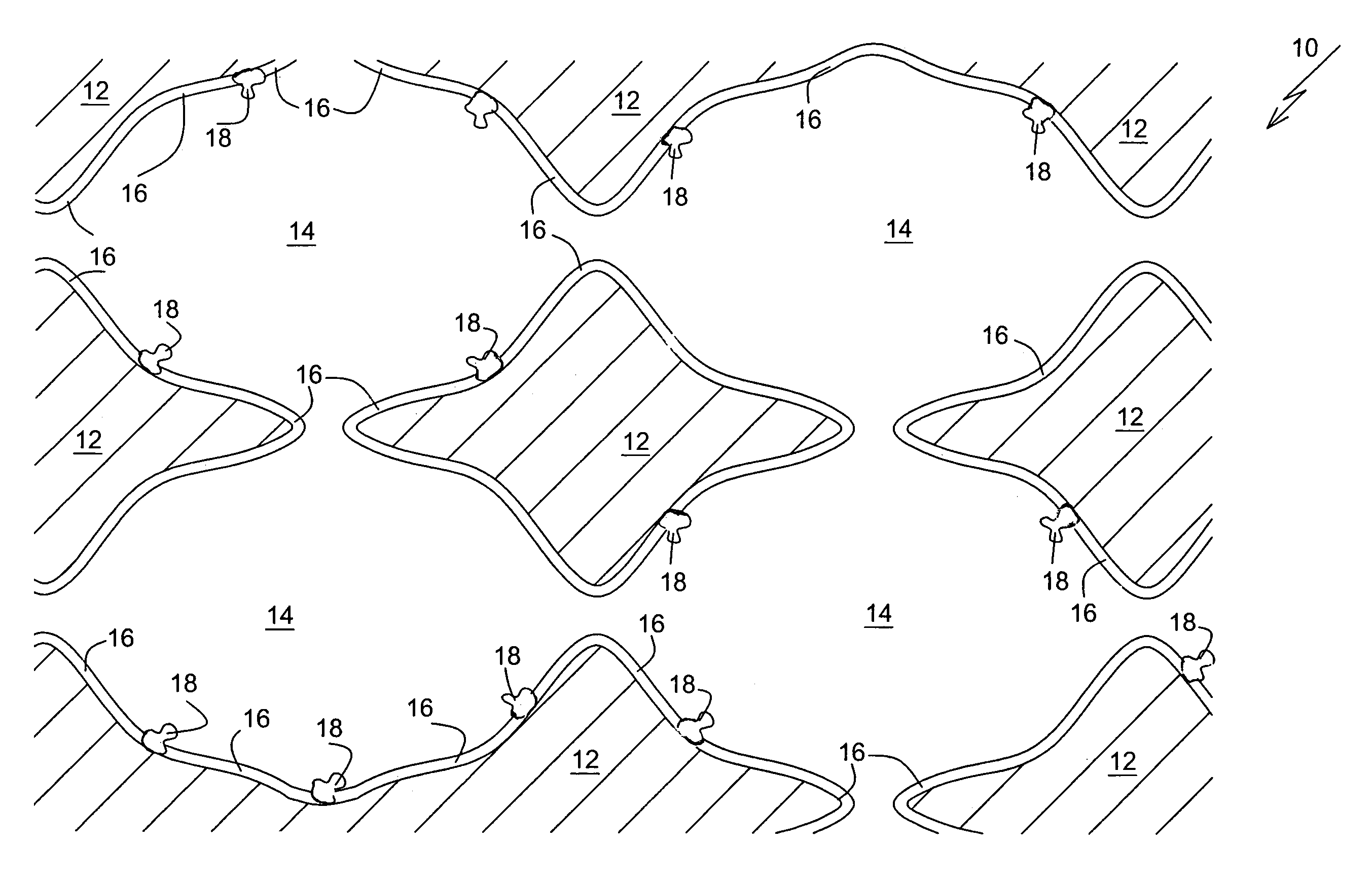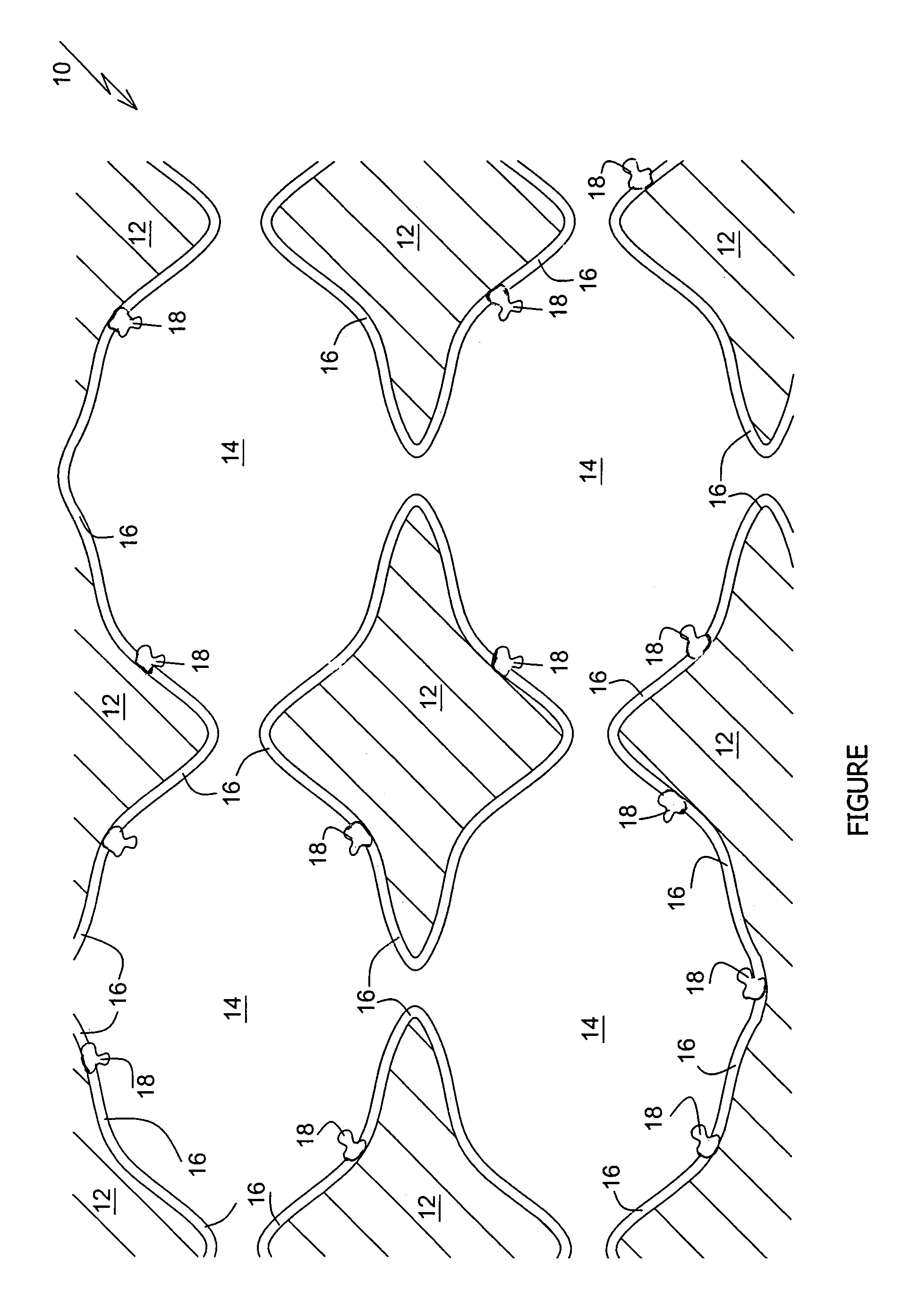Flexible electroconductive foam, and method of preparation thereof
a flexible, electroconductive foam technology, applied in the direction of conductive materials, carbon-silicon compound conductors, organic conductors, etc., can solve the problems of degrading the structural and mechanical properties of foam, difficult to optimize the concentration of binder, and high cost of electrically conductive foams, so as to achieve the effect of swelling the matrix
- Summary
- Abstract
- Description
- Claims
- Application Information
AI Technical Summary
Benefits of technology
Problems solved by technology
Method used
Image
Examples
example 1 (
Prior Art)
[0035]Electroconductive polymer: 9 g polyaniline.
[0036]Liquid medium: 9 ml 4.5% aqueous solution of polyvinyl alcohol. 132 ml water, 9 g dodecylbenzenesulfonic acid.
[0037]The polyaniline was dispersed in the liquid medium by milling in a ball mill for 4 hours at 400 rpm. The polyurethane foam was impregnated with the resulting dispersion by the “dip and nip” technique to produce a precursor foam. The precursor foam was dried in ambient air at room temperature for 30 minutes and then in a vacuum oven at 70° C. for one hour.
example 2
[0038]Electroconductive polymer: 7 g polyaniline.
[0039]Liquid medium: 70 ml m-xylene, 9 g dodecylbenzenesulfonic acid.
[0040]The polyaniline was dispersed in the xylene by milling in a ball mill for 1.5 hours at 400 rpm. The dodecylbenzenesulfonic acid was added to the dispersion and the dispersion was milled in the ball mill for another 1.5 hours at 400 rpm. The polyurethane foam was impregnated with the resulting dispersion by the “dip and nip” technique to produce a precursor foam. The precursor foam was dried in an ambient air airflow at room temperature for 30 minutes and then in a vacuum oven at 70° C. for 30 minutes.
example 3
[0041]Electroconductive polymer: 30 g polyaniline.
[0042]Particulate carbon: 18 g graphite flakes.
[0043]Liquid medium: 300 ml m-xylene, 30 g dodecylbenzenesulfonic acid.
[0044]The polyaniline was dispersed in 200 ml of the xylene by milling in a ball mill for 2.5 hours at 400 rpm. The dodecylbenzenesulfonic acid and the remaining 100 ml of the xylene were added to the dispersion and the dispersion was milled in the ball mill for another 1.5 hours at 400 rpm. The graphite was added to the dispersion and the dispersion was milled in the ball mill for another 4.5 hours at 400 rpm. The polyurethane foam was impregnated with the resulting dispersion by the “dip and nip” technique to produce a precursor foam. The precursor foam was dried in an ambient air airflow at room temperature for 30 minutes and then in a vacuum oven at 70° C. for 30 minutes.
[0045]The following table shows the % weight increase of the electroconductive foam over the base foam, and the resistivity of the electroconduct...
PUM
| Property | Measurement | Unit |
|---|---|---|
| temperature | aaaaa | aaaaa |
| area | aaaaa | aaaaa |
| electroconductive | aaaaa | aaaaa |
Abstract
Description
Claims
Application Information
 Login to View More
Login to View More - R&D
- Intellectual Property
- Life Sciences
- Materials
- Tech Scout
- Unparalleled Data Quality
- Higher Quality Content
- 60% Fewer Hallucinations
Browse by: Latest US Patents, China's latest patents, Technical Efficacy Thesaurus, Application Domain, Technology Topic, Popular Technical Reports.
© 2025 PatSnap. All rights reserved.Legal|Privacy policy|Modern Slavery Act Transparency Statement|Sitemap|About US| Contact US: help@patsnap.com


